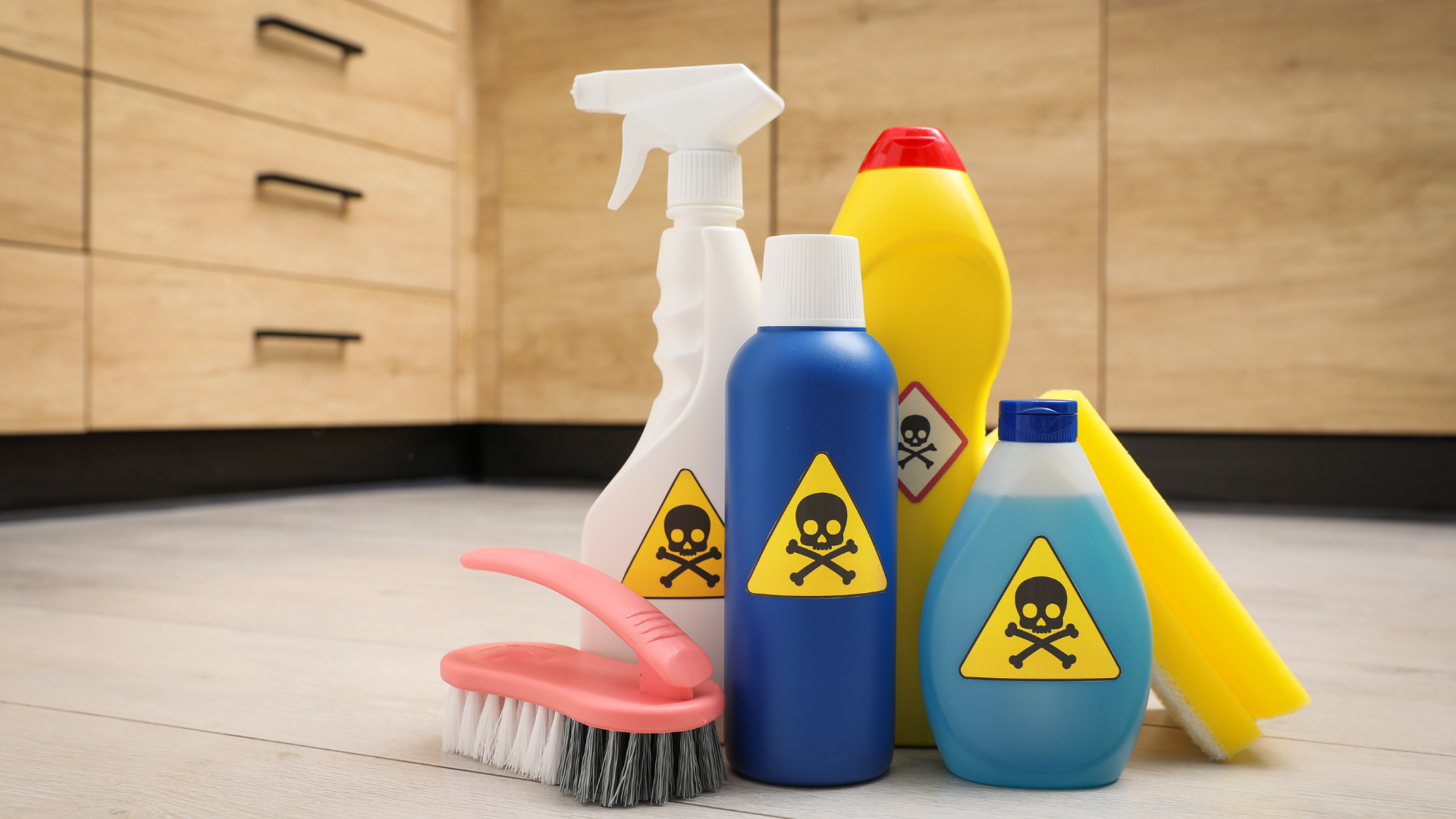Exposure to hazardous substances can lead to various health effects in humans, ranging from minor irritations and respiratory issues to more severe conditions like chemical burns, organ damage, or even fatalities. Animals, both domestic and wildlife, can also suffer from similar health problems when exposed to hazardous materials, including poisoning or long-term environmental damage. Hazardous material incidents can cause contamination of water bodies, soil, and vegetation, leading to ecological disruptions and the loss of biodiversity.

Before an Incident
Understand the types of hazardous materials that could be present in your home, such as cleaning products, pesticides, and fuel. Other hazardous household chemicals may include:
- Aerosol cans including hair spray and deodorant
- Nail polish and nail polish remover
- Furniture polishes
- Automotive products such as antifreeze or motor oil
- Miscellaneous items like batteries, mercury thermometers, and florescent light bulbs
- Flammable products including kerosene, home heating oil, propane tanks, and lighter fluid
- Workshop or painting supplies such as paint thinners and turpentine
- Lawn and garden products like herbicides and insecticides
If you have hazardous chemicals or materials in your home, use these types to protect yourself and your family:
- Read instructions carefully and learn about their risks and safe handling procedures.
- Store hazardous materials properly in a well-ventilated area, away from any heat sources and out of reach of children and pets.
- Keep the materials in their original containers and secure the lids tightly. Ensure all hazardous materials are properly labeled with their contents and hazards. If the original label is damaged or missing, create a new label.
- Develop and practice an evacuation plan with your household. Identify escape routes and a meeting point outside.
- Make sure everyone in your household knows how to contact emergency services and when to evacuate in the event of a hazmat incident.
- Build an emergency kit that includes items like a battery-powered radio, protective clothing, masks, and a first aid kit.
- Sign up for Alert Anne Arundel to receive emergency alerts and notifications directly to your phone or email.
- Consider taking a first aid and CPR course so you can help in the case of an emergency.
- Participate in the Local Emergency Planning Committee (LEPC) quarterly meetings. The Anne Arundel County LEPC serves as a community venue to discuss and plan for chemical emergencies and other disaster or incident plans and training and exercise functions. For more information visit our website or email oemoutreach@aacounty.org.
During an Incident
In the event of suspected poisoning, contact Poison Control right away at 1-800-222-1222 or by using their Poison Control Web Portal. Call 9-1-1 immediately if the individual collapses, has a seizure, has trouble breathing, or is unconscious.

If a hazmat incident occurs near your home, it's important to take immediate action to protect yourself and your family. Here are some steps to follow:
- Stay informed by monitoring local news and emergency alerts for information about the incident and any instructions from local authorities.
- Shelter in place if instructed to do so by local authorities. Move indoors, close all windows and doors, and turn off ventilation systems (heating, air conditioning, fans) to reduce the risk of exposure to hazardous materials outside.
- Seal openings using duct tape and plastic sheeting to seal any gaps around doors, windows, and vents to prevent outside air from entering the building.
- Stay inside until local authorities announce it is safe to leave. Avoid using the phone or other devices that could create sparks.
- If local authorities instruct you to evacuate, follow their instructions, grab your emergency kit, including essential medications, and leave the area quickly.
- If you come into contact with hazardous materials, remove contaminated clothing and wash exposed skin with soap and water. Seek medical attention immediately if you experience symptoms of exposure, such as difficulty breathing, nausea, or skin irritation.
- Check on neighbors, especially those who may need assistance, and offer help if it is safe to do so.
- Avoid the area of the hazmat incident until authorities declare it safe to return.
Remember, if you see something, say something. If you witness or suspect a hazardous materials release, report it to emergency services immediately.

